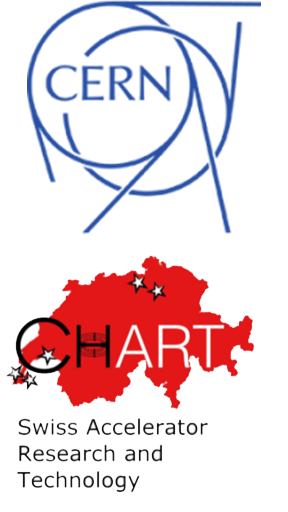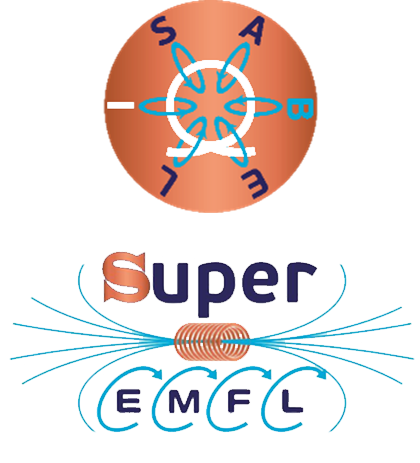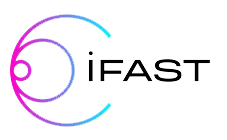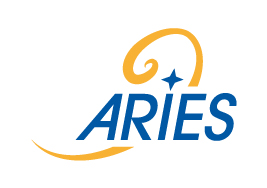- Home
- Collaborations
Collaborations
Bruker BioSpin
Superconducting magnets are the enabling technology for NMR spectroscopy. This research technique is behind the recent advancements in physics, biology, chemistry, material sciences and physiology. Bruker BioSpin is a technological leader in the field of NMR systems. With the growing importance of high-resolution NMR applications at highest magnetic fields, Bruker produced a unique 1.2 GHz world record spectrometer that generates 28.2 T by utilizing a novel hybrid technology with high-temperature superconductors (HTS) in the inner sections and low-temperature superconductors (LTS) in the outer sections. Since many years, UNIGE and Bruker Biospin have been working together within several collaboration frameworks, the goal being the development of key technologies to master the usage of both LTS and HTS in ultra-high magnetic fields.
CERN and CHART

The 2020 update of the European Strategy for Particle Physics (link) indicated as a high priority initiative a substantial R&D effort to assess the feasibility of a future hadron collider with a centre-of-mass energy of at least 100 TeV, corresponding to ~ 7 times the energy of LHC at CERN. High field superconducting magnets are among the key technologies that shall enable this search for new physics at the energy frontier. CERN and UNIGE are strategic partners in an extensive research program focused on development and characterization of new, advanced superconducting wires and cables to extend the range of application of Nb3Sn and explore the capabilities of HTS materials for accelerator magnet applications. These activities are part of the CHART initiative. Since 2015, CHART, which stands for “Swiss Accelerator Research & Technology”, has been bringing together the Swiss leading forces in the R&D of superconductor technology for accelerators under the auspices of the State Secretariat for Education, Research and Innovation (SERI). This interdisciplinary collaboration involves researchers from the Paul Scherrer Institute (PSI), the two Federal Institutes of Technology in Zurich and Lausanne, the University of Geneva and, of course, CERN.
ISABEL and SuperEMFL
ISABEL (Improving the Sustainability of the European Magnetic Field Laboratory) and SuperEMFL (Superconducting magnets for the European Magnet Field Laboratory) are two EU Horizon 2020 projects coordinated by the European Magnetic Field Laboratory (EMFL). Both projects belong to the INFRADEV program that aims to support the development of world-class research infrastructures and help Europe to respond to grand challenges in science, industry, and society. ISABEL is focusing on the long-term sustainability of EMFL and invests in the design of beyond-state-of-the-art magnets. The ambitious goal of SuperEMFL is to develop all-superconducting user magnets beyond 40 T. These magnets are intended to replace current high-field resistive magnets in the future, leading to a significantly lower energy consumption and new scientific possibilities. The Group of Applied Superconductivity put its experience on High Temperature Superconductors at the service of these two projects.
I.FAST: Innovation Fostering in Accelerator Science and Technology
I.FAST is a research project co-funded by the European Commission under the h2020 Research Innovation Action and coordinated by CERN. It involves 49 partners, including 17 companies as co-innovation partners, to explore new sustainable accelerator concepts and promote the transfer of key technologies to applications with societal impact. The task where the Group of Applied Superconductivity is involved aims to the development of innovative superconducting magnets based on High Temperature Superconductors (HTS) for the hadron therapy of cancer. A strategic goal of the project is to form a permanent group to discuss the European strategy for HTS magnets for accelerators.
ARIES: Accelerator Research and Innovation for European Science and Society
The goals of ARIES are the development of novel concepts and the improvement of the performance and sustainability of particle accelerators, transferring the benefits and applications of accelerator technology to both science and society. To address these challenges, ARIES brings together a consortium of 42 beneficiaries from 18 countries: accelerator laboratories, technology institutes, universities and industrial partners. The project is coordinated by CERN and co-funded under the European Commission’s Horizon 2020 Research and Innovation programme. Building on the technical success of EuCARD-2, our task is to drive the development of a new generation of higher performance/lower cost REBCO (Rare earth – Barium – Copper Oxide) coated conductors, in order to bridge the gap between technical performance and readiness for application.
Princeton Plasma Physics Laboratory / Princeton University
The UNIGE-Princeton research collaboration aims to understand the mechanism behind the performance degradation of superconducting wires under mechanical loads and, in particular, to establish a correlation between the imperfect structure of the superconducting filaments in the wires and the stress value corresponding to the occurrence of the irreversible degradation of the critical current. Our approach combines the quantitative analysis of the filament microstructure obtained from synchrotron tomography (link to a 3D reconstruction), characterization of the superconducting properties under mechanical loads and the numerical modelling of the imperfect wire micro-crack fracture mechanics.
EuroCirCol: European Circular Energy-Frontier Collider (01/06/2015 – 31/12/2019)
EuroCirCol is a conceptual design study for a post-LHC research infrastructure based on an energy-frontier 100 TeV/100 km circular hadron collider. It was selected for funding within the Horizon 2020 Research and Innovation Framework Programme. The Consortium is composed of 16 universities, research organisations and laboratories from seven countries of the European Union, Switzerland and Japan, under the lead of CERN. Innovative designs for future accelerator magnets to achieve high-quality fields up to 16 T are amongst the main challenges that are being addressed. The Group of Applied Superconductivity has the role to define the electromechanical limits of the superconducting wires envisaged for use in the next generation accelerator magnets.
EuCARD-2: Enhanced European Coordination for Accelerator Research & Development (01/05/2013 – 30/04/2017)
EuCARD-2 is a research project co-funded by the European Commission under the FP7 Capacities Programme and coordinated by CERN. The objective is the advancement of the European accelerator infrastructures at the forefront of global research, where a consensus is growing towards the interest of more than doubling the present LHC energy. The project has 40 partners from 15 European countries. The list of partners include 10 accelerator laboratories, 23 technology institutes/universities, 5 scientific research institutes and 2 industrial partners. Our contribution focuses on the development of a first High Temperature Superconductor (HTS) magnet that has all requirements to constitute the high field insert of a 20 T dipole magnet for a High Energy-LHC (HE-LHC).






